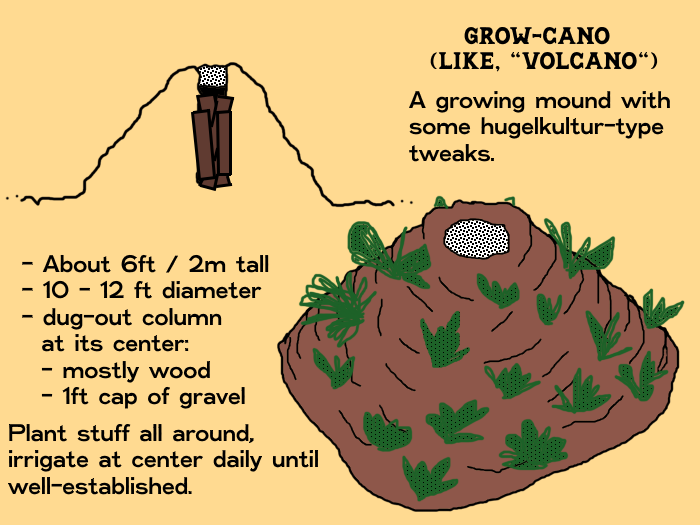
 19
19






"We carry a new world here, in our hearts..." --Buenaventura Durruti
"Don't wish it were easier. Instead, wish you were better." --Jim Rohn
 11
11





 9
9




- Tim's Homestead Journal - Purchase a copy of Building a Better World in Your Backyard - Purchase 6 Decks of Permaculture Cards -
- Purchase 12x Decks of Permaculture Cards - Purchase a copy of the SKIP Book - Purchase 12x copies of Building a Better World in your Backyard
 15
15




 9
9




Maieshe Ljin wrote:I could see the gravel becoming an issue for if you ever wish to put a spade into the mound. It might be just as good to have wood chips or woody debris at the top.
"We carry a new world here, in our hearts..." --Buenaventura Durruti
"Don't wish it were easier. Instead, wish you were better." --Jim Rohn
 9
9
















 7
7





 9
9




How Permies works: https://permies.com/wiki/34193/permies-works-links-threads
My projects on Skye: The tree field, Growing and landracing, perennial polycultures, "Don't dream it - be it! "
 13
13




 7
7




Phil Stevens wrote:I'd substitute chunky biochar for the gravel if I wanted a watering channel that wasn't prone to clogging up. That way, when it comes time to decommission the thing, you don't have rocks in your otherwise magnificent soil.
 18
18




I make a Maple Syrup instructional movie! Check it out HERE
SKIP books, get 'em while they're hot!!! Skills to Inherit Property
See me in a movie building a massive wood staircase:Low Tech Lab Movie
 9
9






"We carry a new world here, in our hearts..." --Buenaventura Durruti
"Don't wish it were easier. Instead, wish you were better." --Jim Rohn
 2
2
















 2
2




George Yacus wrote:I don't think it's worth pursuing, as the majority of roots tend to stick around in the top 30 cm or so of soil, right?
 1
1





|
This. Exactly this. This is what my therapist has been talking about. And now with a tiny ad:
montana community seeking 20 people who are gardeners or want to be gardeners
https://permies.com/t/359868/montana-community-seeking-people-gardeners
|





